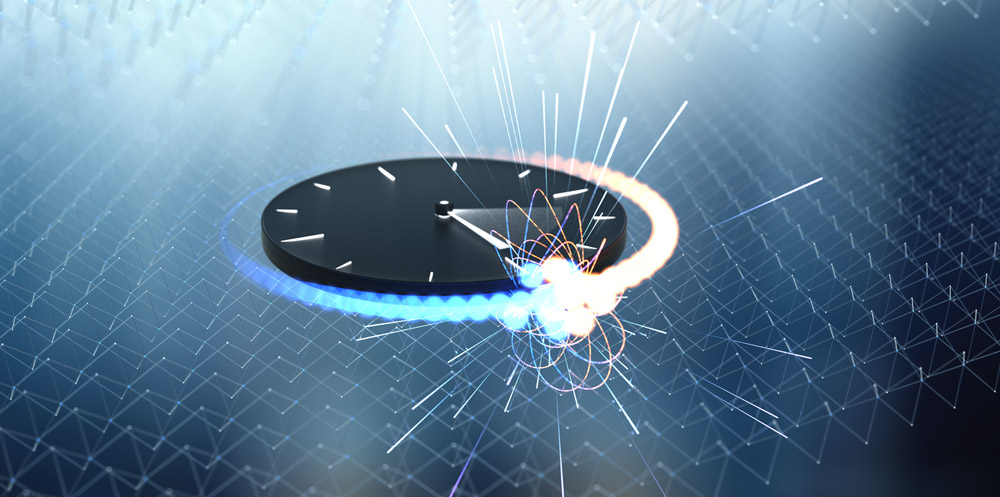Very small and fast: Physicists have developed a method that demonstrates the ultra-fast movement of electrons in materials. The high temporal resolution of a few hundred attoseconds allows tracking the motion of electrons and their interactions with charges and particles with unprecedented precision. This could benefit basic research, but also practical applications in electronics, optoelectronics and quantum technologies, the team reported in Nature.
Whether semiconductor, metallic, or exotic Topological materials: The properties of a material critically depend on the behavior of its electrons. Its motion, its interaction with atoms, external influences, as well as its energy states affect the electrophysical properties of a material and what it can be used for. But due to the low mass of electrons, all these processes occur at an unimaginable speed. Capturing it requires measurements in the attosecond range – billionths of a billionth of a second.
Electrons in a spin cycle
Joseph Fredenstein of the University of Regensburg and his colleagues have now developed a measurement method whose temporal and spatial resolution is sufficient to track the motion of electrons for the first time. The new ‘atto-second stopwatch’ is based on microplatelets of the semiconductor crystalline tungsten diselenide (WSe).2) for two different types of electromagnetic radiation – one in the near infrared and one in the terahertz range.
The first beam pulse excites the electrons in the material and displaces them from their positions, resulting in free electrons and positively charged vacancies. The following terahertz field initially accelerates electrons in one direction. But then the field is reversed, causing the electrons to reverse and collide with their holes again. This “recombination” of charges releases the so-called highly ordered sideband radiation, which is radiation of certain frequencies.
By measuring the time between the excitation, the terahertz pulse, and the emission of radiation, physicists are able to understand the distance the electrons have traveled in the meantime and the interactions they have gone into.
Temporary resolution 300 attoseconds
In the experiment, physicists were able to use this method to measure the behavior of electrons with an accuracy of up to 300 attoseconds. This temporal resolution is sufficient to study the smallest changes in the dynamics of electrons. Measurement data shows not only how interactions occur, but also how. “It is completely unexpected that such precise measurements would be possible, given how short the oscillation of light is – and our time accuracy is 100 times higher,” says senior author Rupert Huber of the University of Regensburg.
The method also shows how the electron’s behavior changes when the material is diluted to only one molecular layer or the accelerating terahertz field is increased. In the first case, the attraction between the charge carriers increases several times, and in the second case the electrons complete their collision path faster. The same is also observed when many electrons start moving at the same time. Then they shield each other and the charge carriers see only weak forces of attraction.
Importance of electronics and quantum technologies
According to physicists, a new attosecond timer could provide new insights into critical processes in semiconductors and other technologically important materials. This in turn could also benefit the development of materials and practical applications in electronics, optoelectronics and quantum technologies. “Our attosecond stopwatch for solids could become a real game-changer and allow us to develop new quantum materials with tailored properties,” Huber says.
But this method is also useful for basic research: “On the atthosecond time scale, interaction effects can no longer be explained using classical laws of physics; they are purely quantum mechanical in nature,” explains co-author Mackillo Kira of the University of Michigan. “Direct follow-up in the time domain of how it affects the movement of electrons is thus very useful for testing the latest quantum theories of multiple objects.” (Nature, 2022; doi: 10.1038/s41586-022-05190-2)
Source: Nature, University of Regensburg, University of Michigan

“Total coffee aficionado. Travel buff. Music ninja. Bacon nerd. Beeraholic.”







More Stories
Researchers detect extremely high-energy gamma rays
Anxiety disorders in old age increase the risk of dementia
Researchers are particularly fascinated by these exoplanets.